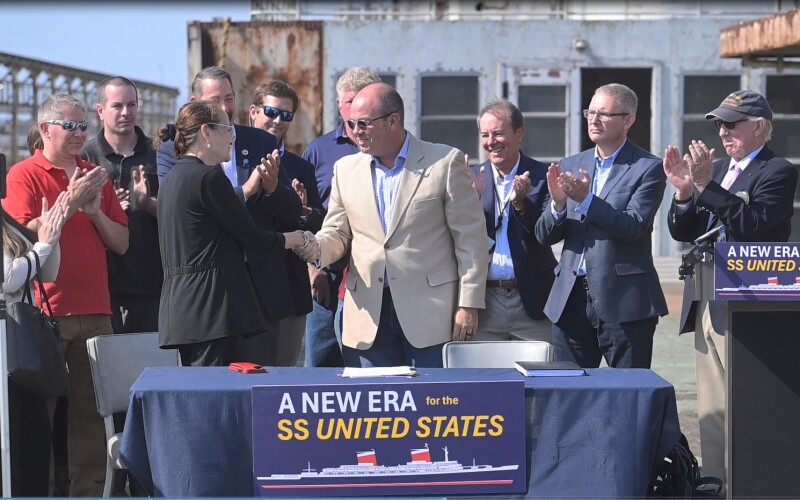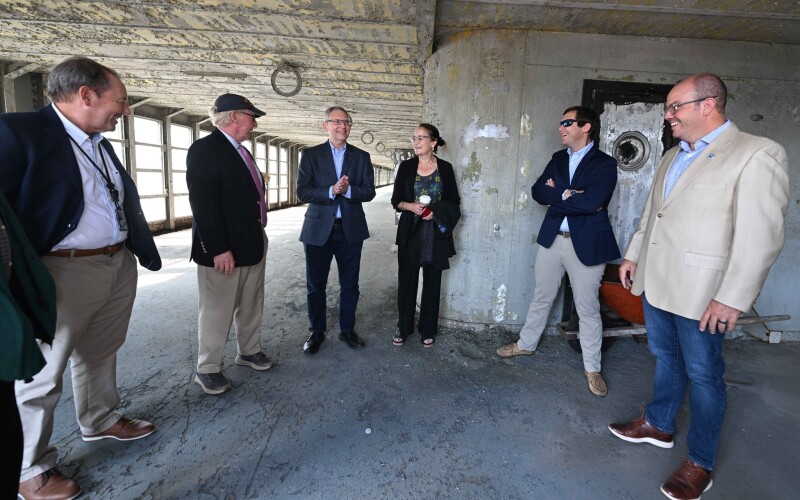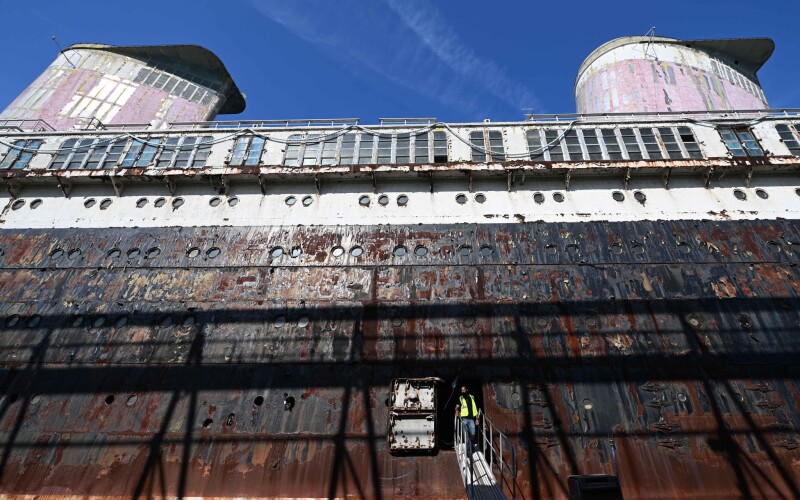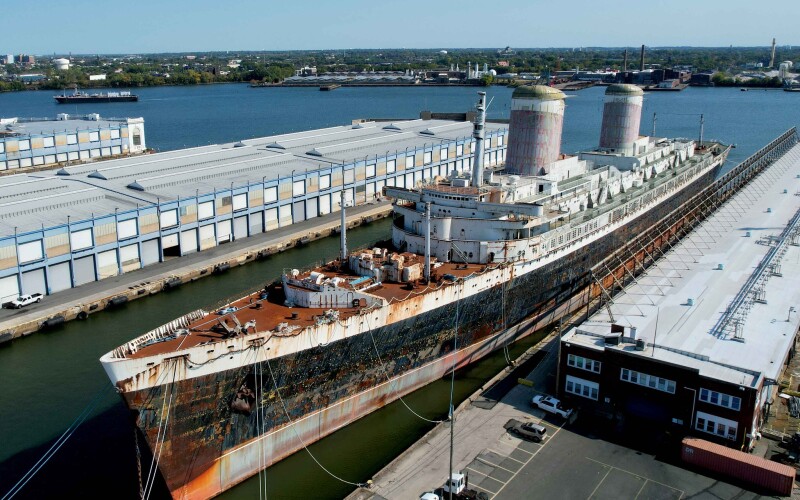Work is underway to prepare the iconic ocean liner SS United States for a move from its longtime Philadelphia berth to Norfolk, Va., and ultimately a final resting place on the bottom of the Gulf of Mexico.
At an Oct. 12 press conference on the ship’s aft main deck, the SS United States Conservancy and Okaloosa County, Fla., Board of Commissioners announced they had closed on an agreement for the county to acquire the once-luxury 1950s passenger vessel for $10.1 million.
The non-profit SS United States Conservancy has worked for more than a decade in hopes of relocating and renovating the ship as a museum and East Coast urban waterfront attraction. But demands for increased rent from owners of its Philadelphia pier and an ensuing federal court order to move the ship left no choice, the group said in a Oct. 11 statement.
“Faced with no options to save the SS United States in her current state and under a binding court order, we were left with the painful but unavoidable choice between scrapping America’s Flagship or converting her into an artificial reef in tandem with a land-based museum. We chose the latter as the most dignified path,” the group said.
“We understand that this decision is deeply challenging and emotional for our community of supporters. It certainly was for our Board of Directors, many of whom have been working for more than a decade to redevelop the ship. While this is not the outcome we envisioned, we are grateful that the ship will have a future.”
Along with the reef building project, Okaloosa County and the conservancy are to work together on an onshore museum telling the story of the United States and maintaining the ship’s many artifacts and original artwork.

Then the epitome of American maritime prowess, the 992’x101’ liner was the world’s fastest passenger ship when it entered service in 1952, clocking a trans-Atlantic crossing at a sustained 35 knots, powered by Babcock & Wilcox boilers and Westinghouse geared steam turbines. The liner was subsidized by the U.S. government, and capable of rapid conversion to a troopship.
World War II and the battle of the Atlantic was still a vital memory for U.S. defense planners, who thought the SS United States could sealift reinforcements – up to 14,000 troops – to any future confrontation in Europe while outrunning the danger of Soviet submarines. Capable of crossing the Atlantic in three and a half days, the ship was a popular ride with celebrities of the day.
The United States, like other trans-Atlantic liners, faced competition from the growing airline industry, and it went out of service in 1969.
The aging ship passed through several owners before winding up in Philadelphia in 1996, and various proposals for reuse followed over the years. The conservancy envisioned the ship restored for its historical and educational mission, combined with creative commercial uses, such as hotel or tech businesses.
In late 2023 the conservancy said it had worked for five years on a new plan for moving the United States to New York City for conversion into a mixed-use waterfront destination with shopping and hotel accommodations near the historic Manhattan West Side piers, the ship’s homeport during its glory days in the 1950s
“But the difficulty of securing the planned pier location and unwillingness of government entities to prioritize the project prevented the plan from being launched,” according to the conservancy.

Led by its president Susan Gibbs, the granddaughter of the ship’s designer, William Francis Gibbs, the conservancy sought to memorialize that great age of U.S. sea power. Despite the end of its hopes for preserving the ship whole, the plan for a landside museum in Florida will keep that history alive, the conservancy says.
The ship will be “the world’s largest artificial reef in tandem with the Conservancy’s land-based museum and visitor center. Tens of thousands of people visiting annually from around the world will experience her and learn her story both on land and as a vibrant habitat for marine life,” that group said. “Once deployed by Okaloosa County, more people will be able to visit and learn about the ship in the space of one year than have had that opportunity since she left seagoing service more than a half century ago.”
In a statement the Okaloosa County Board of Commissioners said a sunken United States “will be a home for a diverse range of marine life and attract divers and anglers from around the world. The purchase of the SS United States will continue the growth of Destin-Fort Walton Beach’s robust artificial reef program, the most active, and one of the largest vessel artificial reef collections in the United States.”





